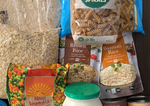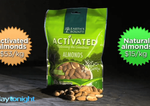How to make more vegies, more delicious
by Anne Finch, Accredited Practising Dietitian for LiveLighter
- February 17, 2025
- Leave a comment
Want to supe up your spuds? Give your gai-lan a glow-up? Turnip the volume on flavour? Then gather round for some un-beet-able tips to get your vegies tasting… tastier. If you’re going for five a day, it’s way more fun if it’s delicious!
Shop seasonal (or work around it)
These days in Western Australia we enjoy a huge range of locally grown fruit and vegies all year round. But there’s no denying that the quality and price still fluctuate with the season! Take a hint, and focus on what’s in season. It’ll be cheaper and tastier.
If an ingredient you want to use is out of season, consider replacing it with something similar rather than using expensive, sub-par produce. If you figure out what the veg is bringing to the dish you can find a suitable swap. For example, green beans (fresh or frozen) can bring some texture and colour instead of asparagus which has a relatively short season. No beautiful tomatoes? Brightly flavoured capsicum or even juicy peaches (fresh or tinned) could be a good swap. Brussels sprouts aren’t always around, but broccoli can provide a similar earthy flavour (and are also excellent roasted – see ‘fire it up’ below!).

Cool the cucumbers

Cucumbers are famously cool, but not all vegies like being cold!
Tomatoes have much better flavour when they’re at room temperature. Store them in the fruit bowl if you’ll eat them quickly, or store them in the fridge but get them out a couple of hours before eating.
Potatoes, onions and whole pumpkins do best in a cool, dark place. In a box or cloth bag in the pantry is perfect.
Most other vegies keep for longer if they’re stored in the fridge. Keep cut vegies fresh for a couple of days by storing in a sealed container with a wet paper towel. For detailed info about how to select, store and prepare a huge range of produce, check out our A-Z of fruit and veg.
Fire it up
There are so many vegies that absolutely come to life with high heat.
Roasted cauliflower, broccoli and Brussels sprouts are sensational. Toss them in olive oil, season them and throw them in a 200ºC oven for around 20 minutes, until done to your liking. I find I get a better result (more crispy bits) if I use a hot baking tray and no baking paper, but if you’re not up for the extra cleanup then baking paper will be fine too!
BBQing is another great way to give your vegies a little special treatment. Corn, eggplant, pumpkin and mushrooms are some of my BBQ favourites. Top with a squeeze of lemon, a dob of pesto or a grating of parmesan for extra flavour.

Spice up your life
Vegies come alive with a little complementary flavour! Think smashed avocado with lime, roast pumpkin with cumin, tomato with basil, and chickpeas with chilli oil. Not sure what goes with what? Try an internet search for “what goes with [insert vegetable here]” to discover some classic pairings. Alternatively… experiment! It’s the best way to learn what you like (and use the food you already have).
Dip it good (or… put vegetables on your vegetables)

If you’re not excited (yet) about chomping on plain vegies, use them as a vessel for something a little extra! We’ve got a bunch of homemade dip recipes, or shop-bought is fine. Choose dips that are lower in saturated fat and salt to keep it healthy. Bonus points if your dip ALSO HAS VEGIES IN IT! There are lots of rippers to choose from – guacamole, hummus, baba ganoush, tzatziki etc.
Hearty salads
If you want to make friends with salad (or have one as a meal), there needs to be more going on than some leaves and a few tomatoes and cucumber chunks. Just follow these fool-proof steps:
- Choose your hero vegetables. What do you love eating? What’s in season or on special? What needs to be rescued in the crisper?
- To make it filling, choose a grainy component (like pasta, croutons, brown rice, quinoa etc) or some other starchy business (corn, potatoes, beans, peas etc).
- Throw in some pops of flavour and colour like olives, herbs, fruit, cheese etc.
- Include a protein component like nuts, legumes, chicken, tuna or egg if it’s going to be a stand-alone meal. And don’t forget to…

Playing dress ups

A good dressing is the difference between meh and whoa in the salad world. The key to a good dressing (as with many things in life) is balance. I like quite a zippy dressing, so I usually start with equal parts oil (usually olive oil, sometimes a more neutral flavoured oil like rice bran) and acid (usually apple-cider vinegar or lemon juice). Looking for something creamy? Consider yoghurt or tahini as a base. Then go crazy with the flavourings! Garlic, ginger, fresh or dried herbs, mustard, sundried tomatoes, soy sauce… the list is endless! Be sure to taste and adjust as you go!
Hot tip: pour ingredients in a jar with a tight-fitting lid and shake them up. Dress the salad just before eating to maintain maximum crunch.
We’d love to hear from you how you like your vegies!







